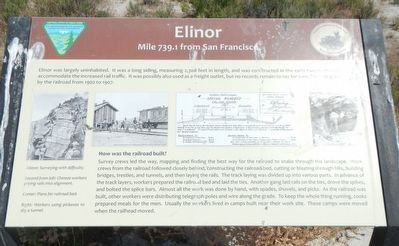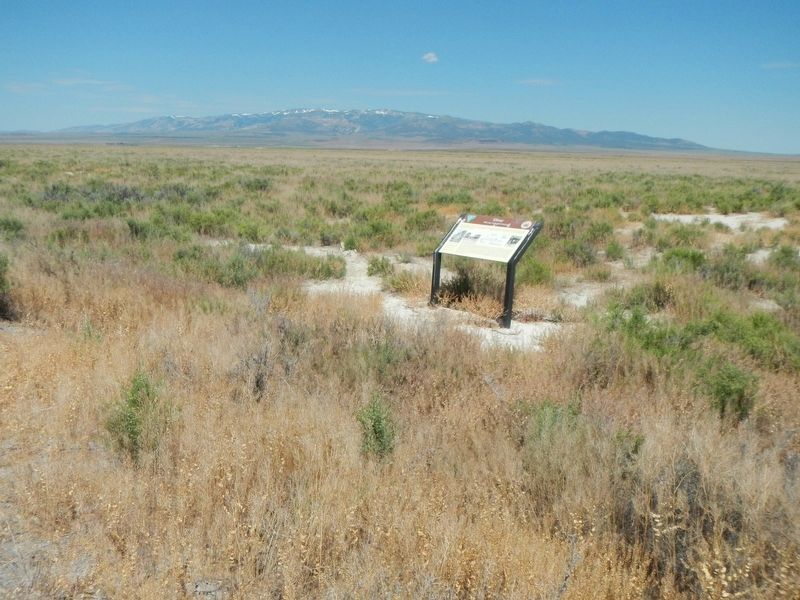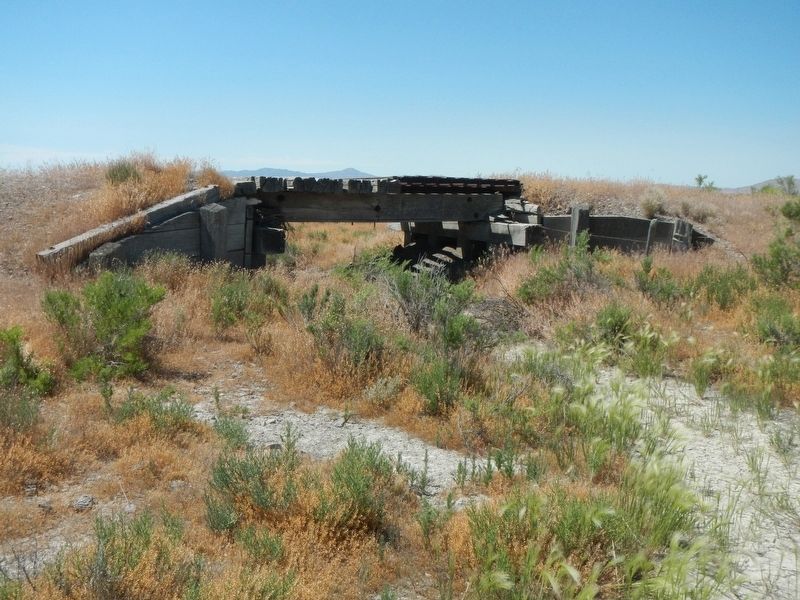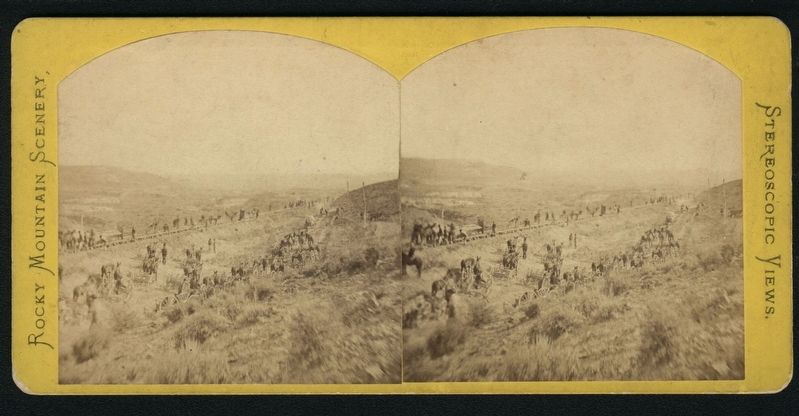Near Snowville in Box Elder County, Utah — The American Mountains (Southwest)
Elinor
Inscription.
Elinor was largely uninhabited. It was a long siding, measuring 2,300 feet in length, and was constructed in the early twentieth century to accommodate increased rail traffic. It was possibly also used as a freight outlet, but no records to say for sure. The siding was used by the railroad from 1902 to 1907.
How was the railroad built?
Survey crews led the way, mapping and finding the best way for the railroad to snake through the landscape. Work crews from the railroad followed closely behind, constructing the railroad bed, cutting or blasting through hill, building bridges, trestles, and tunnels, and then laying the rails. The track laying was divided up into various parts. In advance of the track layers, workers prepared the railroad bed and laid the ties. Another gang laid rails on the ties, drove the spikes, and bolted the splice bars. Almost all the work was done by hand, with spades, shovels, and picks. As the railroad was built, other workers were distributing telegraph poles and wire along the grade. To keep the whole thing running, cooks prepared meals for the men. Usually the workers lived in camps built near the work site. These camps were moved when the railhead moved.
Erected by Department of the Interior, Bureau of Land Management.
Topics and series. This historical marker is listed in this topic list: Railroads & Streetcars. In addition, it is included in the Transcontinental Railroad series list. A significant historical year for this entry is 1902.
Location. 41° 45.252′ N, 113° 0.714′ W. Marker is near Snowville, Utah, in Box Elder County. Marker is on Transcontinental Railroad Back Country Byway, on the right when traveling west. Touch for map. Marker is in this post office area: Snowville UT 84336, United States of America. Touch for directions.
Other nearby markers. At least 7 other markers are within 10 miles of this marker, measured as the crow flies. Seco (approx. 4 miles away); Nella Siding (approx. 4.9 miles away); Kelton (approx. 5.2 miles away); Ten-Mile (approx. 7.3 miles away); Bidwell/Bartleson Trail - Monument Point (approx. 9.3 miles away); Monument (approx. 9.3 miles away); Peplin (approx. 10 miles away).
More about this marker. The Transcontinental Railroad Back Country Byway is a 90 mile dirt/gravel track on top of or beside the old Central Pacific Rail Road grade between Old Lucin and Promontory Summit. Other than markers designating old station and sidings there are few, if any, road signs identifying any of the side roads. Any other road names or numbers use on this marker page have been taken Google Maps which identifies the Byway variously as Golden Spike Loop Road, Old Railroad Grade Road, Salt Wells Road, etc.
Neither are there any mileage posts, though one could do the arithmetic using the "Mile ... from San Francisco" on the markers to determine distances. Nor is there any mail delivery, so no street addresses either.
Credits. This page was last revised on July 11, 2017. It was originally submitted on July 11, 2017, by Barry Swackhamer of Brentwood, California. This page has been viewed 876 times since then and 23 times this year. Photos: 1, 2, 3, 4. submitted on July 11, 2017, by Barry Swackhamer of Brentwood, California.



